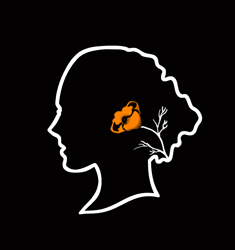Chumash Past and Present
Mike Lopez, Oil on canvas, 36x36 By Holli Harmon
Kathleen Marshall, oil on canvas, 36x36 By Holli Harmon
Grade: 3rd
Subjects: Chumash History, Geography, Cartography
Class Session: 2
Lesson Summary: “Students in grade three learn more about our connections to the past and the ways in which particularly local, but also regional and national, government and traditions have developed and left their marks on current society, providing common memories. Emphasis is on the physical and cultural landscape of California, including the study of American Indians, the subsequent arrival of immigrants, and the impact they have had in forming the character of our contemporary society.” (CCSS History) Mike Lopez and Kathleen Marshall’s stories bring to life where the Chumash are today and how their history lives on in ways besides the names of our streets. The lesson gives students current and relevant exposure to the people who have contributed a lot of culture to our lives today. The lesson plan below is a guide, feel free to adapt to your classroom needs.
Lesson Objectives:
Students will learn about where the Chumash are today and how they are preserving their culture
Students will learn how to map people to their places on a topographic map
Students will learn about the ways people lived and worked in their various places
Materials:
Topographic map of the Santa Barbara Area
Portraits of Mike Lopez and Kathleen Marshall
Street Names in Santa Barbara and some of their histories
A Map of Santa Barbara
Chumash History in the Santa Ynez Valley http://www.santaynezchumash.org/history.html
Lesson Plans:
Show students a map of Santa Barbara.
Give each student a marker and have them mark where they live. Teacher puts a push pin in each one.
Put out photos of several Chumash tribes and introduce the activity to learn: Where did the Chumash people live?
Use resources from the Chumash History website above.
Create cut outs of Chumash resources and images of tribal members for students to arrange on different topographic, geographic and landscape maps.
Have each map represent various geographical features.
Show the portraits of Mike and Kathleen. See. Think. Wonder
What are they wearing?, What Chumash designs do you recognize from last class? (Tribal chief in Mike’s portrait symbols, kathleen’s ceremonial wear etc)
Do they look like the Chumash we studied yesterday?
Highlight how Mike and Kathleen are making a difference.
Pull out the street names in SB and use local legends and photos (such as the Anapamu street dedication) to teach children about how Chumash culture is still in SB today.
Assessment:
See activities above
Mapping
See, think, wonder with Portraits
Word and Image association with street names
Working in stations and groups
Standards Addressed:
CCCSS
3.1 Students describe the physical and human geography and use maps, tables, graphs, photographs, and charts to organize information about people, places, and environments in a spatial context.
1. Identify geographical features in their local region (e.g., deserts, mountains, valleys, hills, coastal areas, oceans, lakes).
2. Trace the ways in which people have used the resources of the local region and modified the physical environment (e.g., a dam constructed upstream changed a river or coastline).
3.2 Students describe the American Indian nations in their local region long ago and in the recent past.
1. Describe national identities, religious beliefs, customs, and various folklore traditions.
2. Discuss the ways in which physical geography, including climate, influenced how the local Indian nations adapted to their natural environment (e.g., how they obtained food, clothing, tools).
3.4 Students understand the role of rules and laws in our daily lives and the basic structure of the U.S. government.
3. Know the histories of important local and national landmarks, symbols, and essential documents that create a sense of community among citizens and exemplify cherished ideals (e.g., the U.S. flag, the bald eagle, the Statue of Liberty, the U.S. Constitution, the Declaration of Independence, the U.S. Capitol).
Created by: Katherine Kwong Intern F’16


